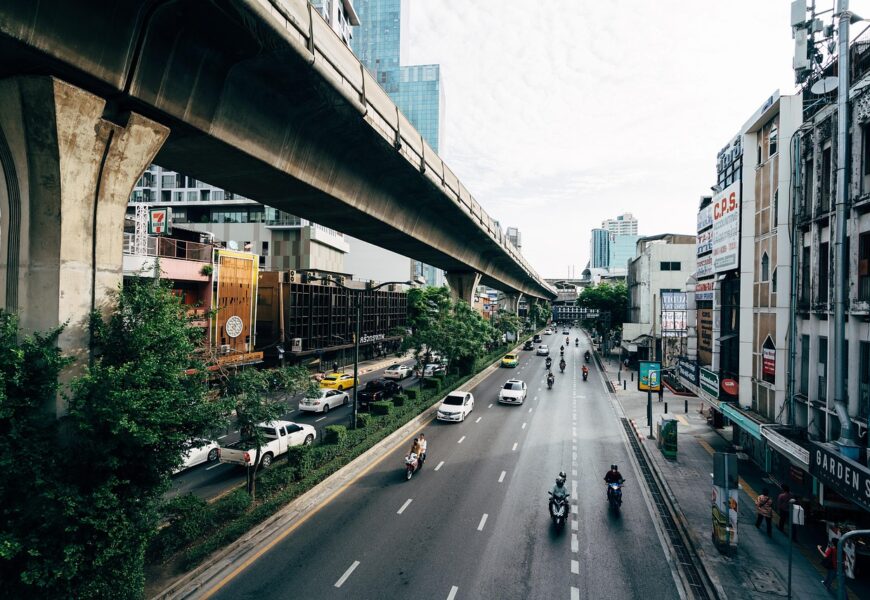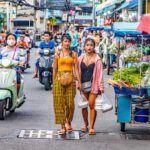Thailand, a vibrant Southeast Asian nation, boasts an incredible array of cities that showcase the country’s rich cultural heritage, modern dynamism, and extraordinary diversity. From bustling metropolitan centers to historic cultural hubs, Thailand’s urban landscapes offer travelers and residents an unparalleled experience of tradition and innovation. Each city presents a unique blend of ancient temples, cutting-edge infrastructure, remarkable cuisine, and warm hospitality that makes Thailand one of the most captivating destinations in the world. Understanding the distinctive characteristics of Thailand’s major cities provides invaluable insights into the nation’s complex social fabric, economic development, and extraordinary cultural tapestry.
Bangkok: The Vibrant Capital City
Bangkok, Thailand’s largest and most dynamic metropolis, represents the quintessential urban experience in Southeast Asia. Home to over 10 million residents, this sprawling city seamlessly blends centuries-old traditions with ultra-modern infrastructure. The city’s skyline features stunning contemporary skyscrapers alongside historic Buddhist temples, creating a mesmerizing architectural landscape. Major attractions like the Grand Palace, Wat Phra Kaew, and Chatuchak Weekend Market draw millions of international tourists annually, showcasing Bangkok’s incredible cultural depth and economic significance.
The city’s transportation system, including its advanced BTS Skytrain and extensive metro network, provides efficient mobility for residents and visitors alike. Bangkok’s economic importance cannot be overstated, serving as Thailand’s primary commercial and financial hub. Its strategic location and robust infrastructure have transformed it into a major regional business center, attracting multinational corporations and entrepreneurial ventures from around the globe.
Chiang Mai: Cultural Heart of Northern Thailand
Nestled in the mountainous region of northern Thailand, Chiang Mai represents a stark contrast to Bangkok’s urban intensity. Known as the cultural capital of the country, this city offers a more relaxed and traditional Thai experience. With a history spanning over 700 years, Chiang Mai boasts more than 300 ancient temples, including the iconic Wat Phra That Doi Suthep, which sits majestically on a mountain overlooking the city. The city’s rich artisan traditions, including intricate handicrafts and textile production, have made it a significant cultural preservation center.
Chiang Mai’s economy has diversified significantly in recent years, emerging as a prominent digital nomad destination and technology hub. The city’s lower cost of living, excellent infrastructure, and high quality of life have attracted numerous international remote workers and startup entrepreneurs. Its universities and research institutions contribute to a vibrant intellectual ecosystem that continues to drive innovation and economic growth in northern Thailand.
Phuket: Thailand’s Premier Island Destination
Phuket, Thailand’s largest island, represents a unique urban environment that combines stunning natural beauty with sophisticated tourism infrastructure. Located in the Andaman Sea, this city has transformed from a modest fishing community to a world-renowned tourist destination. Its pristine beaches, luxurious resorts, and vibrant nightlife attract millions of international visitors annually. The city’s tourism sector contributes significantly to Thailand’s economic landscape, generating billions of dollars in revenue and supporting numerous local businesses.
Beyond tourism, Phuket has developed a diverse economic base that includes marine industries, agriculture, and emerging technology sectors. The city’s international airport and strategic location have positioned it as a critical transportation hub for southern Thailand. Its multicultural heritage, influenced by Chinese, Malay, and indigenous Thai traditions, creates a unique social fabric that distinguishes Phuket from other Thai urban centers.
Ayutthaya: Historical Treasure and UNESCO World Heritage Site
Ayutthaya, once the magnificent capital of the Siamese Kingdom, represents a profound historical landmark that offers extraordinary insights into Thailand’s rich past. Located just north of Bangkok, this ancient city was a global trading center during the 14th to 18th centuries, rivaling major European capitals in sophistication and wealth. Its remarkable temple complexes and historical ruins, now a UNESCO World Heritage Site, attract scholars, historians, and cultural enthusiasts from around the world.
The city’s archaeological sites provide compelling evidence of a sophisticated civilization that engaged in extensive international trade and cultural exchange. Visitors can explore numerous temple ruins, royal complexes, and historical monuments that showcase the architectural brilliance and cultural complexity of medieval Siamese society. Ayutthaya’s historical significance extends far beyond tourism, serving as a critical educational resource for understanding Thailand’s national identity and historical development.
Conclusion: Thailand’s Urban Diversity
Thailand’s cities represent far more than mere geographical locations; they are living, breathing ecosystems that reflect the nation’s extraordinary complexity and potential. From Bangkok’s metropolitan dynamism to Chiang Mai’s cultural richness, each urban center offers a unique perspective on Thai society. These cities demonstrate remarkable resilience, continuously adapting to global changes while maintaining deep connections to traditional values. Travelers and researchers alike can gain profound insights into Thailand’s social, economic, and cultural landscapes by exploring these diverse urban environments.









